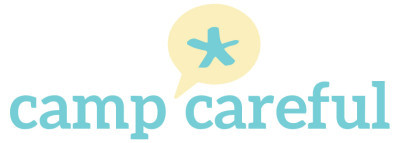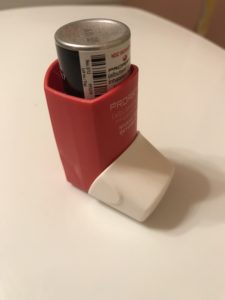Back to School and Time for Statistics Class
It’s September! Back to school time! Kids have returned from summer trips visiting family, week or month-long stays at summer camp, and sleepovers with friends. With the return to routine and school, I find it a good time to go over important statistics and facts about child sexual abuse. Don’t stop reading. This is important stuff that WILL impact you or someone you love.
Do you know what the most common chronic childhood disease is? Asthma. We all know someone with asthma. We’re all familiar with the signs & symptoms of the disease: wheezing, coughing, shortness of breath, chest tightness, and need for an inhaler. In the United States, 8% of children have asthma. I think most of us would know an asthma attack if we saw one. School nurses and teachers know what it looks like. They even correctly “diagnose” kids and send them home with the parent and a comment to “Take him to the doctor. I think he’s having an asthma attack.”
Do we all know how to recognize child sexual abuse with the same ease? Do we know how common child sexual abuse has become in the United States? Previous statistics showed 1 in 4 girls and 1 in 6 boys are sexually abused by the time they are 18 years old1. That’s roughly 20% of children. Those statistics have been updated lately to say 1 in 10 children are sexually abused by the time they’re 181. Okay, so it’s improved to 10% of children. 10% of children are sexually abused by the time they turn 18. That’s 1.5 million more kids suffering from child sexual abuse than asthma.
Why is this important information? Because we as parents/friends/neighbors/teachers/ principals need to know how to look for the signs & symptoms. Know how to react. Know how to BELIEVE. Know how to help. If you saw a kid wheezing, clutching his chest, and gasping for air, would you say, “I think you’re faking!”? Of course not! So why would you say to a child who is frightened, depressed, and crying out that he’s been sexually abused, “I can’t imagine that happened!” Research has shown only 4-8% of child sexual abuse reports are fabricated and most of those fabricated reports are made by adults in custody disputes or teenagers2. Young kids don’t make this stuff up—the details, the sensations, the pain, the fear, the anxiety, the shame, and the guilt. TRUST THE KID. This is so important. And then, TRUST THE JUSTICE SYSTEM. I work with fantastic law enforcement agencies, detectives, and prosecutors on a weekly basis. They do not just hear an outcry and go arrest people. “Innocent until proven guilty” absolutely applies in these serious cases. The detectives are sorting through all the witness statements, victim outcries, forensic interviews, CPS investigations, accused perpetrator’s statements, and evidence. Surprisingly, arrests are made in only 29% of child sexual abuse cases, but the conviction rate is extremely high at over 80-90%5 thanks to experienced and passionate prosecutors like those in McLennan County’s District Attorney office.
Let me emphasize again the myths of child sexual abuse that everyone should know and dismiss from their minds:
- MYTH: Child sexual abuse happens at the hands of strangers.
- In fact, 90% of child sexual abuse victims know their molester3. 30% are abused by family and 60% are abused by people the family trusts3. Don’t just look for the scary white van.
- MYTH: The vast majority of perpetrators of child sexual abuse are adult males.
- Actually, 40% of perpetrators/molesters are older or more powerful children4. Early adolescence (ages 12-14) is the peak age for youth offenses on younger children4.
- MYTH: The majority of sexual assault happens to adult women.
- Sadly, this is so far from the truth. Nearly 70% of all reported sexual assaults occur to children aged 17 and under5,6. Half of those are under the age of 12.
- MYTH: If my child is sexually abused, she or he will tell me.
- Part of the reason it is difficult to quantify the prevalence of child sexual abuse is because only ~38% of child victims disclose sexual abuse during their childhood7. If they do tell, 40% will tell a close friend (who often won’t tell anyone else)8. Boys are significantly more likely not to report abuse (50% less likely than girls in one study)7.
- MYTH: If my child is sexually abused with penetration, there will be evidence on the medical exam to prove it.
- Absolutely false. This point is difficult for the average person to grasp and understand. Even law enforcement and attorneys who don’t deal with child sexual abuse cases frequently will make the erroneous claim that all penetrating sexual abuse will result in physical findings. Decades of research in the area of child sexual abuse has shown that only ~5-10% of child sexual abuse will result in physical findings on genital exam9, 10, 11.
Why do I emphasize these points? Because in the last few months of medical exams I performed at the Advocacy Center, the following types of people were named as perpetrators of child sexual abuse: father, teen friend, teen neighbor, adult neighbor, grandfather, mother’s boyfriend, teenage cousin, adult cousin, brother, stepbrother, school friend. Every single one was a family member or someone the family trusted and many were juvenile offenders. The survivors ranged from age 3 to 16 years old. Not one in the past few months had “evidence” of penetrating injury on genital exam. My own statistics show only 10% of my medical exams have definitive evidence of penetrating trauma/contact/injury to the genitals.
So, PLEASE, dispel these myths and educate yourself about child sexual abuse. Click on the links below to remind yourself on signs/symptoms of child sexual abuse and what to do if you hear an outcry or have suspicions of abuse.
Click here to read about signs and symptoms of child sexual abuse.
Click here for how to react when a child discloses sexual abuse.
Thank you, and as always, empower your kids and stay safe!
Soo Battle, M.D., F.A.A.P.
Disclaimer: The information contained on this website/blog is for informational purposes only and should not be used to replace the relationship that exists between you and your pediatrician or doctor. Please contact your doctor for medical advice and/or treatment recommendations specific to your child.
- Townsend, C., & Rheingold, A.A., (2013). Estimating a child sexual abuse prevalence rate for practitioners: studies. Charleston, S.C., Darkness to Light. Retrieved from www.D2L.org.
- Everson, M., and Boat, B. (1989). False allegations of sexual abuse by children and adolescents.Journal of the American Academy of Child and Adolescent Psychiatry. 28, 2:230-35.
- Finkelhor, D. (2012). Characteristics of crimes against juveniles. Durham, NH: Crimes against Children Research Center.
- Finkelhor, D. (2012). Characteristics of crimes against juveniles. Durham, NH: Crimes against Children Research Center.
- Snyder, H. N. (2000). Sexual assault of young children as reported to law enforcement: Victim, incident, and offender characteristics. Washington, DC: U.S. Department of Justice, Office of Justice Programs, Bureau of Justice Statistics. Retrieved January 12, 2009 fromhttp://www.ojp.usdoj.gov/bjs/pub/pdf/saycrle.pdf
- National Crime Victimization Survey, Statistic calculated by staff at Crimes against Children Research Center. 2002.
- London, K., Bruck, M., Ceci, S., & Shuman, D. (2003) Disclosure of child sexual abuse: What does the research tell us about the ways that children tell? Psychology, Public Policy, and Law, 11(1), 194-226
- Broman-Fulks, J. J., Ruggiero, K. J., Hanson, R. F., Smith, D. W., Resnick, H. S., Kilpatrick, D. G., & Saunders, B. E. (2007). Sexual assault disclosure in relation to adolescent mental health: Results from the National Survey of Adolescents. Journal of Clinical Child and Adolescent Psychology, 36, 260 – 266
- Heger A, et al. Children referred for possible sexual abuse: medical findings in 2384 children, Child Abuse & Neglect. 2002; 26: 645-659
- Adams JA, et al. Examination Findings in Legally Confirmed Child Sexual Abuse: It’s Normal to be Normal. Pediatrics. 1994; 94: 310-317
- Kellogg N, et al. Genital Anatomy in Pregnant Adolescents; “Normal” Does Not Mean “Nothing Happened”. Pediatrics. 2004; 113: e67-69

